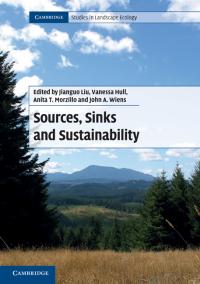New book explores the evolution of a key scientific idea
Sept. 19, 2011
For those seeking to understand and manage ecosystems, a key idea has resonated for more than two decades: spatial variation is essential for ecological sustainability over time. Now a new book examines the impact of that revelation.
It’s been more than 20 years since H. Ronald Pulliam, former president of the Ecological Society of America and Regents Professor Emeritus of Ecology at the University of Georgia, published a now classic paper “Sources, Sinks, and Population Regulation.” In it, he argued that animal and plant populations can be thought of as consisting of sub-populations inhabiting “good” (source) habitat patches and “bad” (sink) habitat patches. Pulliam also put forth that habitats should not be viewed in isolation from other habitats because organisms move among various habitats.
Now, two scientists at Michigan State University and two others assemble a cast of scientists to weigh in on the impacts of Pulliam’s paper over the years. The task was not easy, considering that the paper has been cited over 1,600 times in the scientific literature and has inspired numerous advances in ecological theory and methods, conservation and management practice, and many other disciplines such as economics, human health, ecosystem services, biodiversity, climate change, mathematics, law, medicine, and international relations.
The book “Sources, Sinks and Sustainability” (Cambridge University Press, 544 pages) has been released in the United States and Great Britain. It’s edited by Jianguo “Jack” Liu and Vanessa Hull at the Center for Systems Integration and Sustainability at MSU, where Liu is director and Hull is a PhD student.
in the United States and Great Britain. It’s edited by Jianguo “Jack” Liu and Vanessa Hull at the Center for Systems Integration and Sustainability at MSU, where Liu is director and Hull is a PhD student.
Anita Morzillo, an assistant professor in the Department of Forest Ecosystems and Society at Oregon State University; and John Wiens, chief conservation science officer at PRBO Conservation Science, also are editors. The book incorporates contributions from 53 authors and more than 70 reviewers from around the world who are experts doing cutting-edge work in this evolving field.
“Sources and sinks help us understand and model populations in a more comprehensive way that celebrates the variation in nature,” Hull said. “We can see populations as different parts interacting to make a whole. We can also appreciate that populations change with respect to what is happening in different habitats.”
celebrates the variation in nature,” Hull said. “We can see populations as different parts interacting to make a whole. We can also appreciate that populations change with respect to what is happening in different habitats.”
Hull explained, for example, that a giant panda population may be spread across an area with a mix of “source” and “sink” habitats. Appreciating this variation and what causes it can help us better understand what makes the species persist or die out.
This new way of looking at populations has an important impact on conservation. “A big challenge in conservation is selecting targets,” Hull said. “There often are so many challenges in terms of how to focus efforts and allocate resources for conservation. The concepts of sources and sinks help a lot with selecting targets because you can understand how different targets make different contributions to the overall population.”
Liu, who did graduate work under Pulliam, organized a symposium in 2008 with the other book editors to honor Pulliam in his retirement and review the impact of that classic paper. This book draws on the excitement generated by the 30 presenters from around the world.
The book is useful for researchers and students in a variety of disciplines, and natural resource managers. The publisher has made it available at a discount -- those ordering from Cambridge receive a 20 percent promotional discount on the book.
Contact:
Sue Nichols
Center for Systems Integration and Sustainability
Michigan State University
517-432-0206







